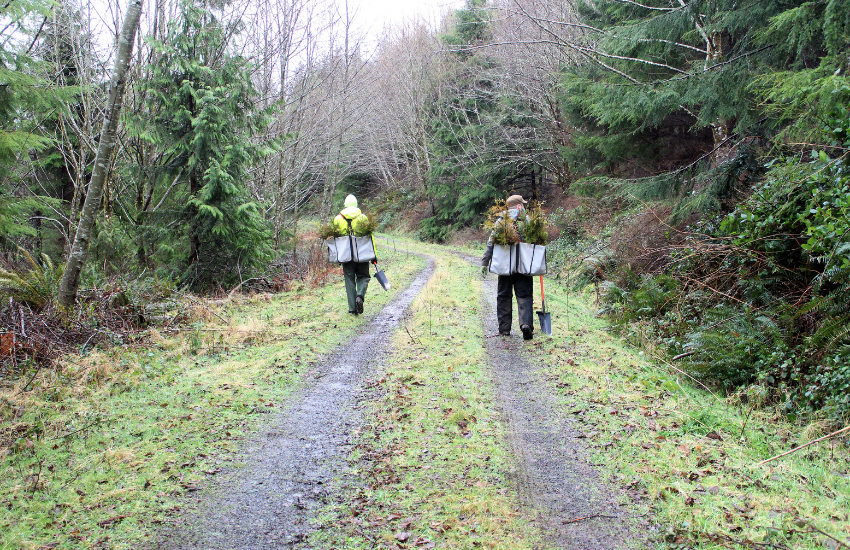
In rain, in sunshine, even in snow, North Coast Land Conservancy’s Land Steward Eric Owen has traveled up to Boneyard Ridge multiple times over the past several weeks to find homes for 1,400 western redcedar and 100 bigleaf maple trees.
The purpose behind the planting project, which will wrap up by the end of February, is to improve species diversity across this 340-acre property, located south of Seaside and adjacent to Ecola State Park and NCLC’s Circle Creek Conservation Center.
The forest at Boneyard Ridge was commercially logged for decades prior to NCLC’s acquisition in 2016. NCLC is utilizing the latest findings in restoration science to put the property on a healthy trajectory toward maturing into a high-functioning rainforest.
Currently, the property is dominated by Sitka spruce, western hemlock and red alder. Western redcedar is a minor species on the property, but large cedar stumps are scattered throughout the forest, providing a glimpse into its historic composition.
Bigleaf maple is a rare occurrence on the property, but “there’s a good chance it was more prevalent here historically,” Eric says. “It is an important riparian species in our coastal watersheds that we hope to bring back to this property.” Riparian areas are the lands that occur directly alongside running water, such as riverbanks and floodplains.

Land Steward Eric Owen and volunteer Colin Meston unload trees at Boneyard Ridge.
The project on Boneyard Ridge is being funded by grants from the Oregon Watershed Enhancement Board (OWEB), U.S Fish and Wildlife Service and Oregon Wildlife Foundation. As part of the thinning process, the team created gaps that mimic the natural structure of a healthy forest, as well as habitat piles that are frequented by songbirds, small mammals, bugs, amphibians and other wildlife. The gaps are now being incorporated into this next phase of the project.
As opposed to planting on an open field, “this takes way more time,” Eric says. He has to navigate across the property to find the gaps that were created last fall. Fortunately, he’s received some assistance over the past month from volunteer Colin Meston, who works for the U.S. Forest Service and serves as a site steward and Conservation Committee member for NCLC. He expressed appreciation for the planting project and getting to be involved.
“It’s sort of a practical and tangible way to improve the condition of the forest,” Colin says.
This forest restoration project is a fairly unique undertaking for NCLC. The organization’s habitat enhancement efforts in the past have centered on wetland restoration, riparian plantings, invasive species management, and coastal prairie restoration.
“It’s been a cool endeavor to undertake,” Eric says, adding it “provides a good template for us to manage the forest in the [3,500-acre proposed] Rainforest Reserve,” which features similar stands of trees and conservation challenges.

Comments